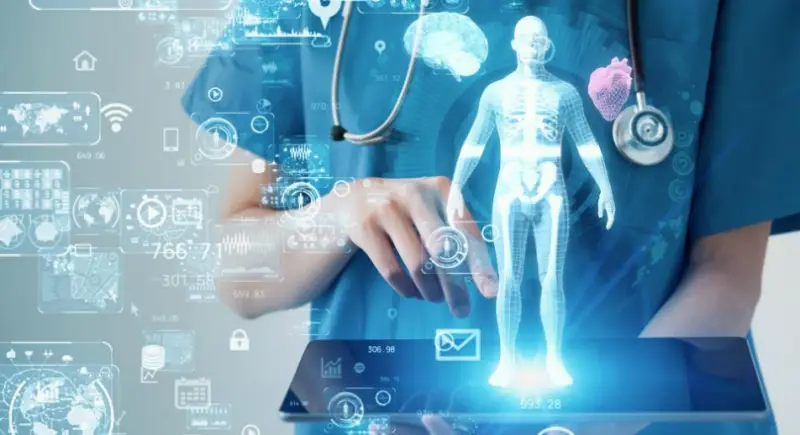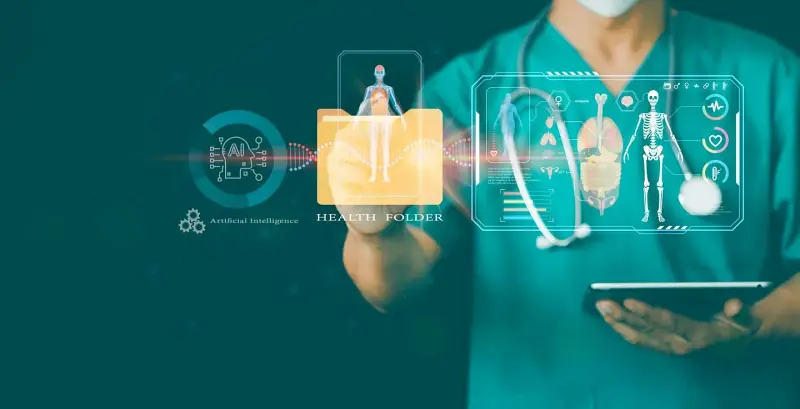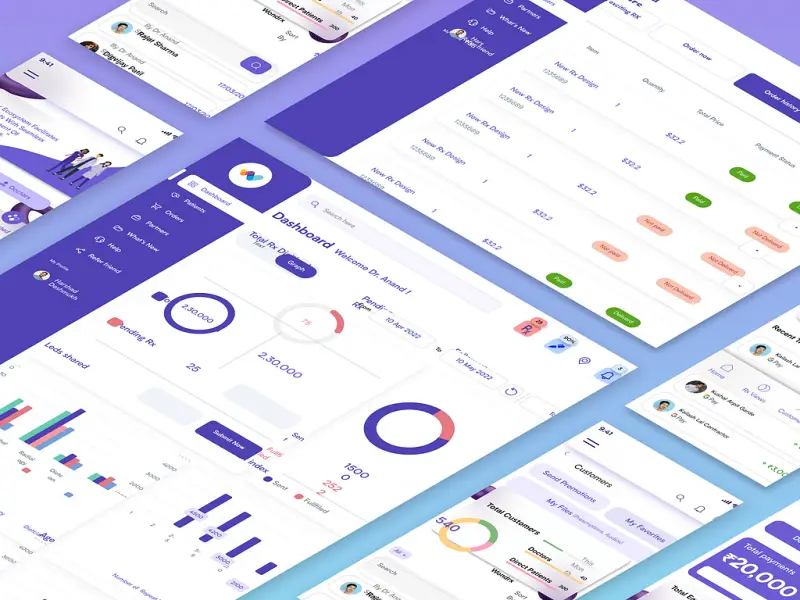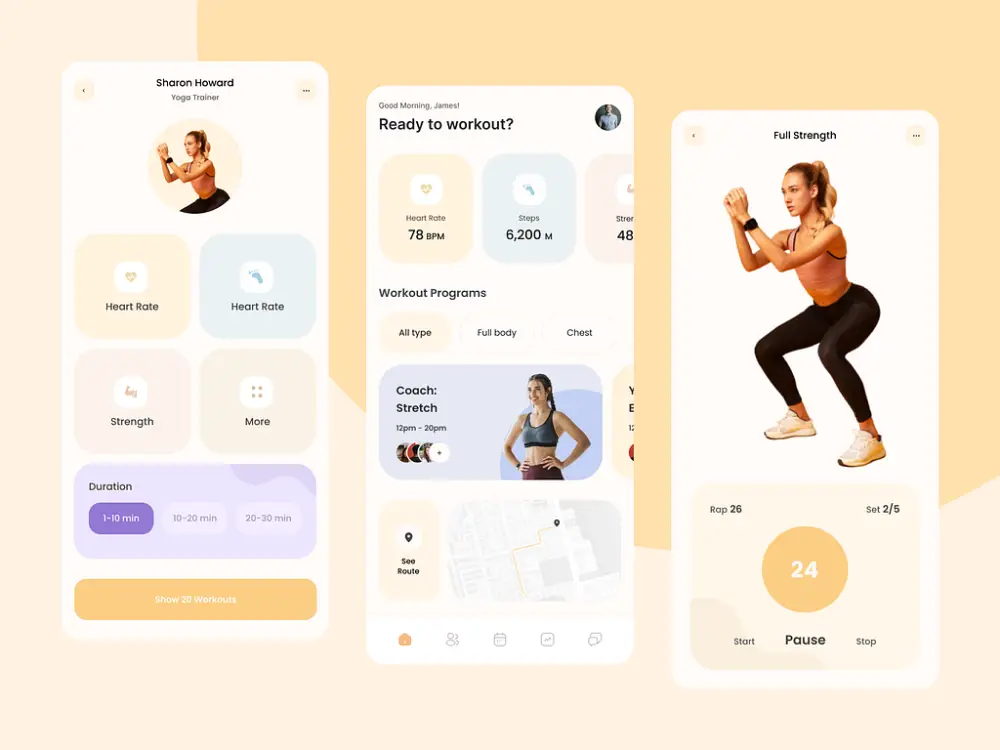5 Best Generative AI in Healthcare Use Cases for 2025
- TECHVIFY Team
- 0 Comments
Generative AI in the healthcare sector employs machine learning techniques to examine unstructured datasets, including medical images and patient health records, and produce new content similar to its training data.
PwC predicts that healthcare costs have risen by 7% in 2024. This increase is due to healthcare workers experiencing burnout, workforce shortages, disputes between payers and providers, and inflation. The industry is exploring new technologies like generative AI to ensure efficient patient care without high operational costs.
This article will explain how generative AI in healthcare can support organizations.
What Can Generative AI in Healthcare Bring to the Table?
This technology is transforming healthcare by enabling more personalized and effective care. Traditional treatments relied on broad population data, but generative AI healthcare allows for deep analysis of individual genetic profiles and medical histories. This leads to tailored treatments that improve outcomes and reduce adverse effects.
Generative AI also speeds up drug discovery and development. It helps identify potential drug candidates, optimize molecular structures, and predict side effects, making the process faster and more efficient.
Additionally, generative AI makes healthcare more data-driven. It can analyze large datasets, detect trends, and make predictions. These insights are valuable for disease management, resource allocation, and decision-making, ultimately improving the sustainability of patient care and the healthcare system.
Generative AI is paving the way for a more responsive, patient-focused healthcare ecosystem.
More Healthcare-related articles:
5 Generative AI in Healthcare Use Cases You Should Know
Enhancing Medical Training and Simulations
Generative AI in healthcare can create realistic simulations of various health conditions. This technology enables medical trainees and practitioners to practice within a secure and controlled setting. AI can create patient models exhibiting various diseases or assist in simulating surgeries and other medical procedures.
Traditional training uses limited pre-programmed scenarios. AI, however, can quickly generate patient cases and adapt in real-time based on the trainees’ decisions. This provides a more challenging and realistic learning experience.
Example:
The University of Michigan developed a generative AI model for simulating sepsis treatment scenarios.
The University of Pennsylvania used a generative AI model to simulate the spread of COVID-19. This model helped researchers test different interventions and evaluate the effects of social distancing and vaccination on the virus.

Enhancing Clinical Diagnosis
Generative AI can significantly aid in clinical diagnosis in several ways:
Generating high-quality medical images: Hospitals can use generative AI tools to improve traditional AI’s diagnostic capabilities. This technology can convert low-quality scans into high-resolution images with detailed clarity, apply anomaly detection algorithms, and present the results to radiologists.
Diagnosing diseases: Scientists can educate generative AI models using medical images, laboratory tests, and other patient information to identify and diagnose the early stages of various health conditions. These algorithms can identify skin cancer, lung cancer, concealed fractures, initial stages of Alzheimer’s, and diabetic retinopathy, among others. Furthermore, AI models can reveal biomarkers that cause specific disorders and predict disease progression.
Answering medical questions: Diagnosticians can use generative AI to quickly find answers instead of searching through medical literature. AI systems can handle vast volumes of data and produce responses quickly, saving doctors valuable time.
Example:
Researchers have used Generative Adversarial Network (GAN) models to enhance features in low-quality medical scans, transforming them into high-resolution images. This method was tested on brain MRI scans, dermoscopy, retinal fundoscopy, and cardiac ultrasound images, showing higher accuracy in anomaly detection after image enhancement.
In another example, Google’s AI-powered Med-Palm 2, trained on the MedQA dataset, achieved an 85% accuracy rate in answering medical questions. While Google acknowledges that the algorithm needs further improvement, it is a promising start for generative AI as a diagnostic assistant.
Advancing Drug Development
The Congressional Budget Office states that developing a new drug cost between $1 billion and $2 billion, including failed attempts. AI can potentially reduce the time needed to design and screen new drugs by nearly half, saving the pharma industry about $26 billion annually. AI can also cut clinical trial costs by $28 billion per year.
Pharmaceutical companies can use generative AI for healthcare to accelerate drug discovery by:
- Creating and fabricating new molecules with specific attributes for lab evaluation
- Forecasting characteristics of new drug candidates and proteins.
- Producing virtual compounds that exhibit strong binding affinities to their targets, which can be tested in computer simulations to cut costs.
- Forecasting side effects of new drugs by analyzing their molecular structure
Example:
Collaborative alliances between biotech firms and AI startups indicate the growing role of generative AI in the pharmaceutical industry.
Recently, Recursion Pharmaceuticals purchased two Canadian AI startups for $88 million. One of them is Valence. Valence specializes in generative AI and will design drug candidates using small and noisy datasets, which are insufficient for traditional drug discovery methods.
At the University of Toronto, a research team developed ProteinSGM, a generative AI system that creates novel proteins by analyzing images of existing protein structures. This tool produces proteins at a high rate, and another AI model, OmegaFold, evaluates the potential of these proteins. Researchers found that most of the new sequences generated by ProteinSGM fold into real protein structures.

Streamlining Administrative Tasks
Generative AI can significantly reduce the administrative burden on healthcare professionals. Studies show that the burnout rate among US physicians is 62%. This burnout increases the risk of medical errors and personal issues like alcohol abuse and suicidal thoughts.
Generative AI can assist in reducing this burden by automating administrative tasks, which account for 15%-30% of healthcare spending, according to HealthAffairs. Here are some ways generative AI can assist:
- Extracting data from patients’ medical records and populating health registries. Microsoft plans to integrate generative AI into Epic’s Electronic Health Records (EHR) to handle tasks like replying to patient messages.
- Transcribing and summarizing patient consultations, filling in EHR fields, and creating clinical documentation are all possible uses of GPT -4. Microsoft’s Nuance has integrated GPT-4 into its clinical transcription software, which doctors are currently beta testing.
- Generating structured health reports by analyzing patient information, including medical history, lab results, and scans.
- Producing treatment recommendations.
- Answering doctors’ queries.
- Finding optimal appointment slots based on patients’ needs and doctors’ availability.
- Generating personalized appointment reminders and follow-up emails.
- Reviewing medical insurance claims and predicting which ones might be rejected.
- Composing surveys to gather patient feedback on procedures and visits, analyzing the data, and providing actionable insights to improve care delivery.
Example:
Navina, a medical AI startup, developed a generative AI assistant to help doctors manage administrative tasks more effectively. This technology can retrieve patient information, encompassing electronic health records (EHRs), insurance claims, and scanned documents. It provides status updates, recommends care options, answers doctors’ questions, and generates structured documents like referral letters and progress notes.
Navina has already secured $44 million in funding, showing strong interest from the medical community.
Have a Project Idea in Mind?
Get in touch with experts for a free consultation. We’ll help you decide on next steps, explain how the development process is organized, and provide you with a free project estimate.
Generating Synthetic Medical Data
Medical research requires extensive data on various health conditions, which is often scarce, especially for rare diseases. Collecting this data is costly, and its use and sharing are restricted by privacy laws.
Generative AI in medical can produce synthetic data samples to augment real-life health datasets without privacy concerns, as this data does not pertain to specific individuals. AI can generate synthetic Electronic Health Records (EHRs), scans, and other types of medical data.
Example:
GANerAid: A team of German researchers developed GANerAid, an AI-powered model based on the Generative Adversarial Network (GAN) approach. GANerAid can generate synthetic patient data for clinical trials, even when the original training dataset is limited in size. This model produces medical data with desired properties, aiding in clinical trials and research.
EHR-M-GAN: Another team of scientists created the EHR-M-GAN model to synthesize electronic health records. Driven by restrictive data privacy regulations and the challenges of sharing patient data between hospitals, they built a model that generates heterogeneous, mixed-type EHR data. This data realistically represents patient trajectories, containing both continuous and discrete values, making it useful for research and analysis.
Benefits of Synthetic Medical Data
-
- Privacy Compliance: Synthetic data is not subject to privacy regulations, facilitating easier sharing and usage.
- Augmented Datasets: Enhances the quality and quantity of existing datasets, particularly for rare conditions.
- Cost-Effective: Reduces the expenses associated with collecting real-world data.
- Improved Research: Enables more robust clinical trials and medical research by providing comprehensive datasets.
Generative AI’s ability to create synthetic data holds significant promise for advancing medical research and improving healthcare outcomes.
Challenges of Generative AI in the Healthcare Industry
| Challenge | Description | Addressing the Challenge |
|---|---|---|
| Bias | AI models inherit biases from training data that may not represent the target population fairly. This can disproportionately affect underrepresented groups, particularly in healthcare. Detecting and eliminating this bias is a significant challenge. |
– Develop and implement strategies to identify and reduce bias in training datasets. – Conduct regular audits of AI systems to ensure equitable performance across diverse patient populations. |
| Lack of Regulations | There are no comprehensive regulations governing AI use, leaving many ethical issues unresolved and increasing the risk of misuse. Regulatory frameworks in the US and the EU are still in development. |
– Advocate for and contribute to the development of comprehensive AI regulations. – Establish interim guidelines and best practices within healthcare organizations until formal regulations are in place. |
| Accuracy Concerns | AI, including large language models (LLMs), can produce factually incorrect outputs (“hallucinations”). In healthcare, the consequences of such errors can be severe. Organizations must determine when AI errors are tolerable and demand explainability. |
– Implement rigorous validation and testing protocols for AI tools before deployment. – Use AI as a supportive tool to complement human judgment, ensuring healthcare professionals remain involved in decision-making. |
| Accountability | Determining who is responsible for AI-influenced health outcomes is complex and unclear, affecting motivation and performance. |
– Explicitly outline roles and responsibilities associated with AI use in healthcare outcomes. – Develop contractual agreements and liability frameworks to address potential harms resulting from AI errors. |
Enhancing Your Healthcare Practice with Generative AI
The capabilities of generative AI algorithms are continuously advancing. According to Robert Pearl, a clinical professor at Stanford University School of Medicine, noted:
“ChatGPT is doubling in power every six months to a year. In five years, it’s going to be 30 times more powerful than it is today. In 10 years, it will be 1,000 times more powerful… In next-generation tools, it’s estimated there will be a trillion parameters, which is interestingly the approximate number of connections in the human brain.”

AI can be a powerful tool but can cause significant harm if misused. Healthcare organizations need to approach this technology carefully. Here are three tips to get started with AI-based solutions in healthcare:
Prepare Your Data
Even if you use a pre-trained AI model, consider retraining it on your proprietary dataset. Ensure the data is high-quality and representative of your target population. Keep medical data secure and protect patient privacy. Disclose the dataset an algorithm was trained on to understand its strengths and limitations.
Take Control of Your AI Models
Promote responsible AI use in your organization. Ensure everyone knows when and how to use AI tools and who is responsible for the outcomes. Test AI models on low-impact use cases before scaling to more sensitive applications. Decide where a small failure rate is acceptable, such as in administrative tasks, and where it is not, such as in diagnostics. Create a framework to govern AI use in your hospital.
Help Employees Embrace the Technology
AI still needs human oversight, especially in the regulated healthcare sector. Staff will need training to supervise AI models. Encourage employees to adapt their routines to use the time saved by AI for other valuable tasks.
Conclusion
Generative AI is revolutionizing healthcare by enabling personalized patient care, speeding up drug discovery, enhancing diagnosis, streamlining administrative tasks, and generating synthetic medical data. These advancements promise more efficient, cost-effective, and patient-focused healthcare.
Ready to transform your healthcare services with cutting-edge generative AI? Contact TECHVIFY today for the best AI solutions tailored to your needs. Let us help you achieve groundbreaking results and optimize your operations. Don’t wait—reach out now and lead the future of healthcare.
TECHVIFY – Global AI & Software Solution Company
From Startups to Industry Leaders: TECHVIFY prioritizes results, not just deliverables. Accelerate your time to market and see ROI early with high-performing teams, AI (including GenAI) Software Solutions, and ODC (Offshore Development Center) services.
- Email: [email protected]
- Phone: (+84)24.77762.666





